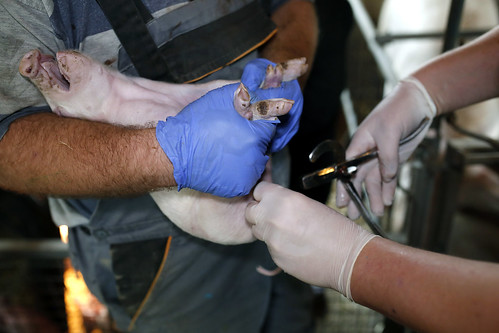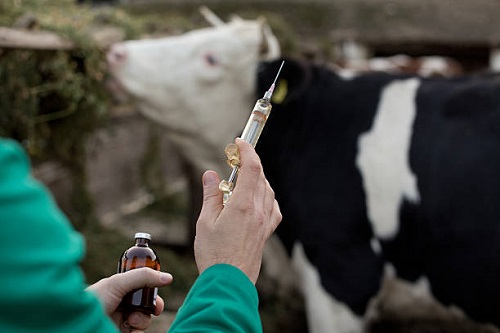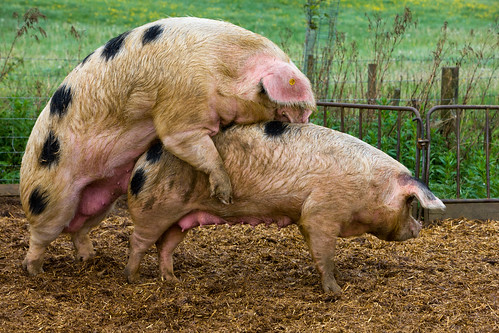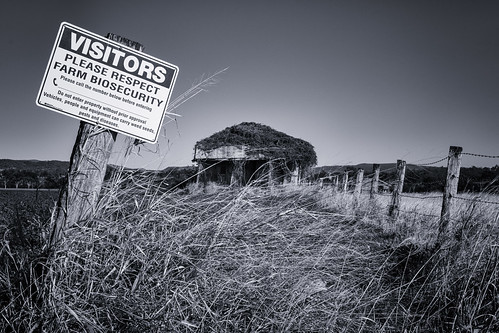Castration is simply the destruction or removal of the testes, epididymis, and a part of the spermatic cord from a male animal, e.g. ram, buck, boar and bull. It is an act of rendering an animal sexually inactive or unreproductive.
Male animals reserved for fattening and those not needed for breeding or mating should be castrated. Castration is a critical management practice in animal husbandry. It enables livestock farmers to manage breeding on their farms easily.
Most times, farmers don’t castrate male animals. They allow them to flock together with the females. The outcome of this decision will cause low-quality males to mate with females to produce low-quality or less productive offspring.
Advantages or Benefits of Castration
- It prevents inbreeding: Inbreeding is the mating of closely related animals together. It often leads to poor growth rates, poor food conversion ratio, and some other genetic defects. When you castrate, you prevent inbreeding.
- It prevents unwanted pregnancies: Castration prevents unplanned pregnancies and also the mating of young female animals before they attain good body weight, size and age for pregnancy and parturition (giving birth).
- It assures the safety of handlers, producers, and other animals: Castrated animals are often less aggressive, and they can be handled with ease.
- It reduces the taints or goaty smell in the meat of male animals: For example, the meat from uncastrated animals usually has a strong ‘goaty’ smell while it is lesser in castrated males.
- It improves weight development and carcass quality: This point is one of the effects of castrating male animals. A castrated bull, ram, buck or boar usually develops more weight quickly. If castration is done late, maybe after the animal has attained sexual maturity, the growth of such an animal could be retarded, and its lean meat quality will also decrease.
Why Castration Should be Done Early?
There are many opinions about the optimal age of castration. As a general rule, a male animal should be castrated before reaching puberty to avoid unwanted pregnancies.
Male calves, for example, are customarily castrated between 6 and 9 months of age, coinciding with their weaning. This is an overly stressful time for the calf. This is why it is recommended that male calves chosen for meat production be castrated at birth or in the first week of the life of the animal, because it is more manageable, the risks are reduced, and it is less traumatic.
If what you are looking for is a pack or plough animal, you must castrate it at 30 months of age. Since the characteristics of the bull’s strength have already been fully developed, such as the head, neck, shoulders, arms and chest are necessary for a good animal of traction of drag or load.
Although the animal can be castrated at any time in its life, it should not be forgotten that in meat production, weight loss in fattening is a function of age. Studies and practice indicate that castration weight loss increases with increasing age and inversely weight loss is minimal when a male animal is castrated at birth or in the first week of age. Early castration has been shown to result in less weaning weight and less development of bone tissues.
You can castrate kids, lambs, piglets, calves, etc. as soon as you observe and confirm that their testicles have descended into the scrotum, which could take between a few days to three weeks of age. It may not be necessary to administer a pain reliever or sedation if castration is carried out at this age.
The operation becomes complicated and more painful with older ages, and the possibility of complications increases. In addition, castration is easier, and the wound heals quickly in younger animals. Unfortunately, many farmers choose to castrate their male animals at an older age when the animal is matured. They give the reason that castration at an early age would lead to stunted growth, or it would affect good body conformation.
How to Castrate Male Animals
Animals such as pigs, cattle, goats, sheep and dogs can be castrated. There are three methods of castration.
- Surgical removal
- Burdizzo
- Elastrator and rubber ring
How to carry out surgical removal of the testes (castration)
This process is a surgical operation; hence, ensure that you know what you’re doing before you start the operation. If not, use the service of a veterinary surgeon. The steps involved in the surgical removal of the testes (castration) are as follow:
- Sterilize the surgical knife or blade and syringe
- Wash the hands thoroughly and with an antiseptic such as Dettol
- Wash the scrotum with warm water and antiseptic
- Use the left hand to grasp the end of the scrotum and the right hand to force the testicles back gently
- Use the sterilized surgical blade or knife to open up one end of the scrotum. Then grip a testicle between the thumb and first finger. Gently twist anticlockwise and apply traction to remove the testis.
- Repeat the process with the second testis
- Apply iodine or gental violet (GV) to the operated area
- Inject the animal with oxytetracycline solution using a sterile syringe.
- Give the animal multivitamins for five days
Burdizzo or bloodless castrator
- Hold the burdizzo using the right hand and draw one testicle down with the left hand.
- Place the spermatic cord between the jaws of the burdizzo and apply pressure.
- Repeat the process with the second testicle.
Elastrator and rubber rings
The rings are placed under the scrotum and spermatic cord when the animal is about 1-week old or when both testicles have descended. Ensure that both testes are below the ring.
As the animal grows old, the ring will make the scrotum and testicles develop further due to the stoppage of blood supply to the area. After a while, the scrotum and testicles shrink and die naturally.




Thank for this actricle.
I’m interested in this profession and will appreciate some more common methods in castration.